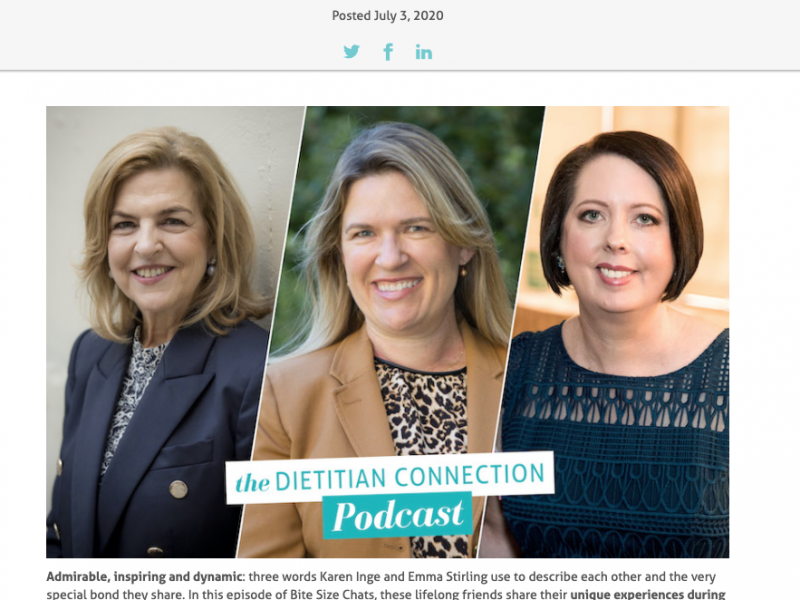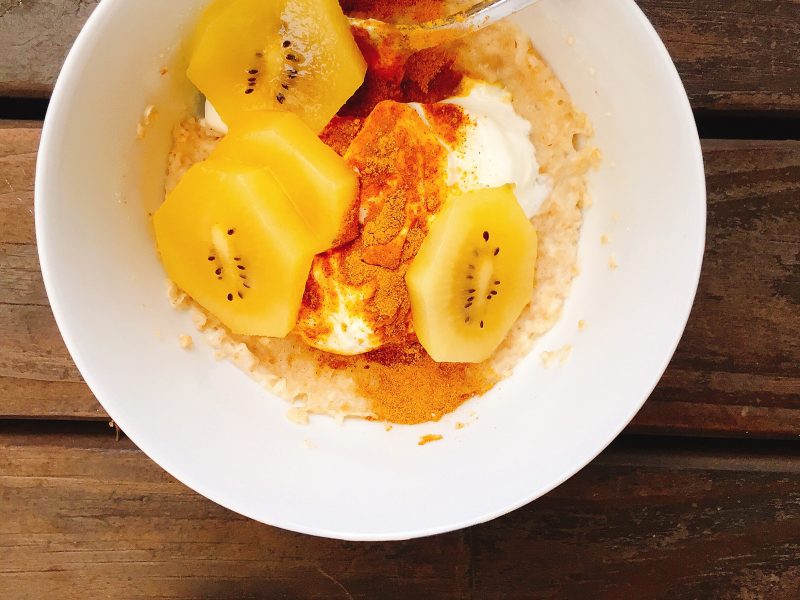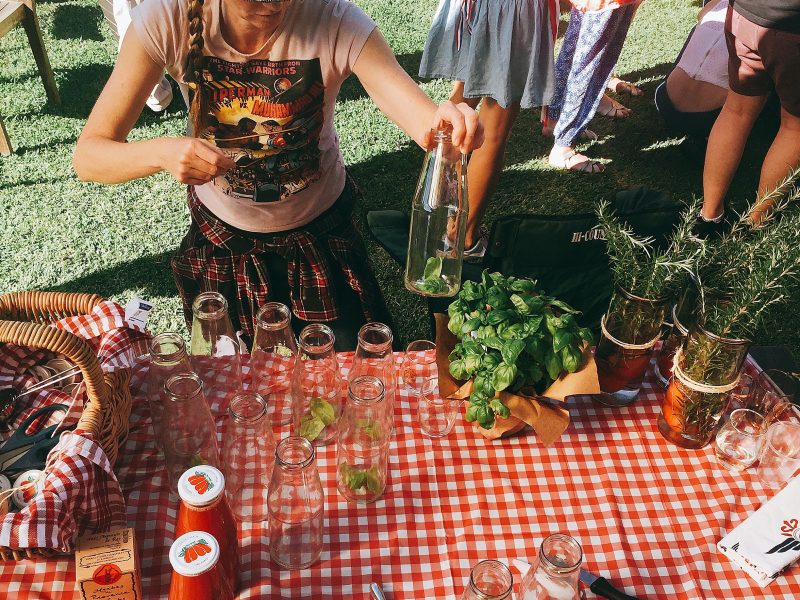Whether it’s a niche concoction from an edgy, hipster juice bar, or a freshly squeezed made in your own kitchen, everyone loves juice. We know it tastes great, but do the claims of turning back the years, and other countless health and beauty benefits add up? And what’s the best way to get the most out of juice? We asked September Sub of the month Felicity Curtain to squeeze out the facts on juice.
About our expert:
Felicity is a final year Food Science and Nutrition student who, in addition to maintaining her nutrition blog, plans to continue her studies in Dietetics over the next few years. Her main interest is in reviewing trending health crazes and ‘debunking’ food myths, so it’s no surprise that her most popular article to date discussed the celebrity-endorsed purple food diet!
What’s good about juice?
Consuming juice boosts your daily consumption of fruit and/or vegetables. A probable association has been made between the consumption of fruit and vegetables and a reduced risk of conditions such as stroke, heart disease and obesity. Although eating the whole food is always preferable, for those struggling to make up the recommended 2 and 5 serves a day, juicing is an easy way to pack more in.
Fruit and vegies are naturally full of vitamins, minerals and potent plant phytochemicals, so gulping down a juice will up your intake. Being creative with your juice pays too. Recent studies have shown consumption of beetroot juice both reduces blood pressure, and improves exercise performance.
What’s bad about juice?
Guzzling juice is an easy way to load up on kilojoules – and considering how many pieces of fruit it takes to make one glass of juice, (around 4 oranges for one glass of orange juice) it’s easy to understand why.
The process of juicing often removes the skin and pulp of fruit and vegetables, which are high in fibre and natural pigments called flavonoids. According to Associate Professor Tim Crowe, this can reduce both the health benefits and feelings of fullness that you’d ordinarily get from eating your fruit and vegies.
Fruit juices are naturally high in sugar and acid, so excessive consumption can lead to enamel erosion. To avoid these detrimental effects, the Australian Dental Association recommends keeping juice consumption to meal times, and remembering to brush morning and night.
Most conventional juices (such as those on the supermarket shelves) are pasteurised – heated to around 70 degrees – to kill microorganisms and extend the shelf life. This process can affect the sensory and nutritional properties of the juice, as it compromises enzymes and antioxidant activity. There are, however, a number of juices on the market that have circumvented this by employing alternatives to pasteurisation. The CSIRO-developed Preshajuice, for instance, utilises modern technology in the form of ‘cold pressure’ to kill microorganisms and extend the shelf life without any heat. Better yet, you can find it in your local supermarket!
Don’t get too excited by the myriad claims of nutritional benefits you’ll sometimes see cited in juice bars and by popular diets. It’s unlikely that juice exhibits benefits beyond that contained in the whole fruit or vegetable. So promises of cleansing, anti-ageing, inflammation prevention or skin clearing are probably little more than an attempt to squeeze a little extra money from the customer!
How to make the most of juicing:
If you’re serious about juicing, it might be worth investing in a serious blender such as a Vitamix, which will retain all the fibrous skin and pulp, and can withstand other additions such as chia seeds, great for boosting the soluble fibre content. Alternatively, a non-centrifugal juicer presses the juice out, also retaining the beneficial pulp.
Use aromatics such as herbs and spices in your juice to enhance the flavour and nutritional value without adding any nasties. Great flavour combinations can be made from mint, basil, parsley, ginger and turmeric.
To avoid inadvertently consuming a large hit of kilojoules, make your juice using mainly vegetables. Dietitian Susie Burrell recommends using one piece of fruit mixed with a variety of vegetables to get the greatest nutritional benefit. Vegies like cucumber, kale and leafy greens are a great place to start.
Water down your juice to reduce your sugar and overall kilojoule consumption. I have a friend who grew up with her juice being watered down – around 30% juice to 70% water. Even now she can’t drink juice without being diluted – living proof that it works!
What’s with the new ‘cold pressed’ hype?
You may have noticed the influx of #pressedjuices excitement running through all forms of social media. The difference between ‘cold pressed’ and conventional juice is all in the method used to extract it. Cold pressed juices are slowly pressed rather than being blended or cut, and so retain the fruit’s fibrous pulp. This reportedly preserves the maximum level of nutrients and enzymes from the fruit and vegetables, which in ordinary centrifugal machines are often damaged as a result of the heat-producing blades. In general, pressed juices contain no additives or preservatives, and are not pasteurised.

Pressed juices are delicious, vibrant in colour, and abundant in variety. But if you plan on becoming a regular consumer, be prepared to fork out a small fortune – $9.50 for a bottle (albeit a generous 470ml serve) is a little steep for me to justify regularly. But with appealing flavour combinations like orange, pomegranate, raspberry and turmeric; it’s easy to see why their popularity is so widespread.
Take a glance around your local shopping centre and I’m sure you’ll agree the juice trend is here to stay. Providing you don’t go overboard, this could certainly be a lot worse. Looking for inspiration? Have a look at my two favourite juice recipes on my latest blog post – Getting Juicy!
Editor’s comment:
Thanks for the excellent post, Felicity and so great to have you on board this month. We wish you all the best with your dietetic applications. How about you lovely readers? Do you juice it? Have we described #coldpressedjuices benefits correctly juice fans? Love your comments below.



